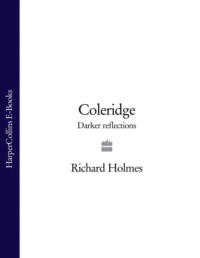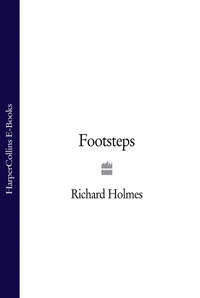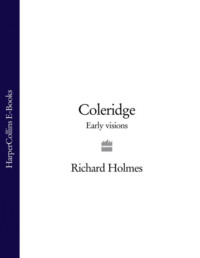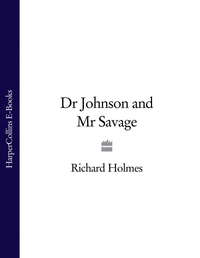
Полная версия
Dr Johnson and Mr Savage
Yet the women who knew young Johnson best, either directly or through family gossip and reminiscence, take a very different attitude. Among them are Lucy Porter (Johnson’s stepdaughter), Anna Seward and Hester Thrale: almost invariably cited by Boswell as ‘unreliable’ witnesses.
Anna Seward (1747–1809), who became the poet known as ‘the Swan of Lichfield’, was not born when Johnson left for London. But she became an invaluable source for local memories and hearsay about him, especially through her grandfather (who had taught Johnson), her mother (who knew Elizabeth Porter) and the Walmsley family, about all of whom she wrote extensively. Boswell delights in disproving her stories on innumerable points. Yet Anna frequently throws revealing light on young Johnson’s emotions. One of her most suggestive formulations is this: ‘Johnson was always fancying himself in love with some princess or other.’19
Johnson first fell in love some time in his middle teens. His princess was Ann Hector, the sister of his school-friend, Edmund Hector, at Stourbridge. It is probably for her that he wrote his first poem: ‘On a Daffodil: The First Flower that the Author had seen that Year’, which refers to a smiling nymph, Cleora. A distinguished modern biographer, Walter Jackson Bate, remarks that ‘when we think of the later Johnson, the very title is hilarious’.20 Yet this seems a curiously revealing admission. For the poem does not appear particularly absurd for a sixteen-year-old:
But while I sing, the nimble moments fly,
See! Sol’s bright chariot seeks the western main,
And ah! behold the shriveling blossoms die,
So late admir’d and prais’d, alas! in vain!
With grief this emblem of mankind I see,
Like one awaken’d from a pleasing dream,
Cleora’s self, fair flower, shall fade like thee,
Alike must fall the Poet and his theme.21
When Boswell discovered this romance, he used another characteristic form of deflection: he omitted it from the Lichfield years, and retold it retrospectively as a reminiscence of Johnson’s in his sixty-seventh year. It was displaced, and thus disarmed. Yet what Johnson says is moving and significant. ‘She was the first woman with whom I was in love. It dropt out of my head imperceptibly; but she and I shall always have a kindness for each other.’ When he talked of Ann Hector that night, ‘he seemed to have had his affection revived; for he said, “If I had married her, it might have been as happy for me.”’22
Later at Stourbridge, just before going up to Oxford, he fell more seriously in love with Olivia Lloyd, the beautiful and well-educated daughter of a rich Quaker family of ironmasters and philanthropists. Olivia was two years older than him, well-read in Greek and Latin classics (which she later taught to her nephews), amusing and quick, and renowned for her looks. She was known locally as ‘the pretty Birmingham Quakeress’.23 Johnson fantasised about her throughout his university years, and she was one of the dreams he had to abandon bitterly along with his degree.
Olivia was the first in a line of pretty, vivacious bluestockings whom Johnson quietly worshipped (and also helped professionally) in London. Boswell takes a single sentence to describe the affair ‘he was much enamoured of Olivia Lloyd … to whom he wrote a copy of verses, which I have not been able to recover.’24
Edmund Hector recalled acting as a go-between in this situation: ‘some Young Ladies in Lichfield had a mind to act The Distressed Mother, for whom [Johnson] wrote the Epilogue and gave it me to convey privately to them.’ Johnson’s agonies of self-consciousness about his monstrous appearance are glimpsed in that ‘privately’.
Other poems possibly connected with Olivia Lloyd include a series of translations from Horace, normally the most urbane, ironic and detached of poets. But Johnson selects passages that are surprisingly moody, bleak and romantic:
But being counsell’d to go home
And see my mistress face no more
Confus’d about the streets I roam
And stop’d unwilling at her door.
Then to the inclement skies expos’d I sat
And sigh’d and wept at her relentless gate.25
Johnson must have chosen these particular stanzas (from Horace’s Eleventh Epode) because they reflected something in his own situation, his eternal longings for la princesse lointaine. As a picture of the lover unrequited, the man shut out, the roamer through the dark windswept streets, they also prepared him for Savage.
There are several other love-poems and poetical flirtations (mostly collected by Edmund Hector) which date from this sad post-Oxford period: ‘To a Young Lady on her Birthday’, ‘An Ode on a Lady Leaving her Place of Abode’, and a verse to the eighteen-year-old Dorothy Hickman, ‘Playing on the Spinet’. Dorothy was the daughter of another friend at Stourbridge, George Hickman, and she married soon after in 1734.
The pattern of longing, frustration and self-laceration (however formalised in drawing-room ‘impromptus’) is common throughout these poems. As he wrote of Dorothy Hickman, ‘We bless the Tyrant, and we hug the Chain.’26
Young Johnson’s daydreams were not only confined to suitable girls. His princess might also be some tempting, racy actress. At about the time he first met Elizabeth Porter he also ‘was in love with’ a Junoesque young actress who visited Lichfield with a local repertory company, playing Flora, the romantic lead in Colley Cibber’s suggestive farce, Hob: or the Country Wake.27 David Garrick seems to have known something about this infatuation, and remarked that Johnson (possibly because of his eyesight) did not have a delicate (‘elegans’) taste in the female form, and could also appreciate brazen and ‘vulgar’ sexual talents.28 Boswell once again safely confined this episode to Johnson’s reminiscences forty years later.
Anna Seward seems to have been right about Johnson’s ‘princess’ syndrome, and the pattern that emerges is not unlike the classic fairy-tale of Beauty and the Beast. Johnson’s marriage does not really seem to have altered this, and throughout Johnson’s early London years there is evidence that it continues. It made Johnson both peculiarly sympathetic, and perhaps even vulnerable, to Savage’s own much wilder emotional fantasies.
Johnson’s strange romance with Elizabeth Porter began in 1734. His good friend Harry Porter, a mercer at Edgbaston, had been taken ill, and Johnson rode out frequently from Lichfield to attend Harry’s sick-bed. Johnson became a friend of the whole family in their distress: two young sons Jervis and Joseph; an eighteen-year-old daughter, Lucy; and Mrs Elizabeth Porter, then aged forty-five.29
Boswell, and all Johnson’s subsequent biographers except Anna Seward, failed to draw the obvious conclusion. If Johnson had any interest other than pure friendship, it was evidently in the princess, the eighteen-year-old Lucy, to whom he had been attracted since his schooldays.30 Her mother Elizabeth, who was nearly twice his age and devoted to her ailing husband, was not initially the object of his dreams.
A formal introduction to Lucy, as with other girls, had later been made by Edmund Hector, who bought his clothes from Harry Porter.31 This was probably in 1732, when Lucy was a blossoming sixteen and Johnson twenty-three. She vividly recalled Johnson from those early visits, with a physical revulsion that is expressive. This is Beauty describing the Beast, as reported years later to Boswell. Both maintain the comfortable fiction that Johnson was only ever interested in Lucy’s mother. But this is not what emerges, and it is not what Anna Seward thought either ‘the rustic prettiness, and artless manners of her daughter, the present Mrs Lucy Porter, had won Johnson’s youthful heart.’32
In pictorial terms, these early meetings resulted in perhaps the most unforgettable image of Johnson in his twenties that we have. Boswell records:
Miss Porter told me, that when he was first introduced to her mother, [Johnson’s] appearance was very forbidding: he was then lean and lank, so that his immense structure of bones was hid-eously striking to the eye, and the scars of the scrophula were deeply visible. He also wore his hair, which was straight and stiff, and separated behind: and he often had, seemingly, convulsive starts and odd gesticulations, which tended to excite at once surprize and ridicule.33
This, with its touch of horrified exaggeration, is almost worthy of Hogarth. The detail of the hair, ‘stiff and straight’, worn without a wig, and yet combed self-consciously behind, is curiously disturbing; and perhaps there is a grotesque hint, through Lucy’s eyes, of the suitor. Lucy recalls her mother’s extraordinary reaction: ‘this is the most sensible man that I ever saw in my life.’
Anna Seward was quoting a Lichfield tradition that Johnson was first in love with Lucy. She goes on to suggest, by way of proof, that Johnson’s poem ‘On a Sprig of Myrtle’ was written for Lucy, and given to her around 1733. Boswell ridicules this, and is able to show conclusively that the poem was written before they met, in 1731, and at the special request of a quite different friend of Edmund Hector’s – a Mr Morgan – who ‘waited upon a lady’ in the neigh-bourhood. At Boswell’s urgings, Hector even produced an original manuscript dated 1731. There biographers have left the matter.34
No one has considered that Johnson may later have given the same poem, or a version of it, to Lucy Porter as well, exactly as Anna Seward claims. The poem is about the ‘ambiguity’ of love, as summed up in the emblem of the myrtle which can mean many things in lover’s lore:
The Myrtle crowns the happy Lovers heads,
Th’ unhappy Lovers Graves the Myrtle spreads;
Oh! then the Meaning of thy Gift impart,
And cure the throbbings of an anxious Heart …35
Anna Seward’s account of its presentation to Lucy, written privately to Boswell, is particularly insistent:
I know those verses were addressed to Lucy Porter, when he was enamoured of her in his boyish days, two or three years before he had seen her mother, his future wife. He wrote them at my grandfather’s, and gave them to Lucy in the presence of my mother, to whom she showed them on the instant. She used to repeat them to me, when I asked her for the Verses Dr Johnson gave her on a Sprig of Myrtle, which he had stolen or begged from her bosom. We all know honest Lucy Porter to have been incapable of the mean vanity of applying to herself a compliment not intended for her.36
It seems unlikely that Anna Seward was muddled about the particular poem, or that she should be completely wrong about the general direction of Johnson’s feelings.
At all events, when Harry Porter suddenly died and was buried on 5th September 1734, the situation evidently changed. Elizabeth was now a widow, with a small family fortune of £600, a lively interest in books and a desire for solace. Johnson and she clearly enjoyed each other’s company; both were to some degree eccentric Physical passion emerged on both sides, and Johnson would later insist, ‘with much gravity’, that it was ‘a love-marriage’ for both of them.37
Mrs Porter was a vivacious woman with a well-rounded figure, a mass of blonde hair and a large maternal bosom. She dressed well, used make-up, lived quite expensively and liked to talk and tipple in the evenings. Johnson, starved for love and intelligent conversation, childlike and shy in his affection, punished for his physical ugliness, was slowly captivated over the next eighteen months. He must have given up any hope he may have had for children of his own. He abandoned, at least temporarily, his dream of the princess.
Instead, it was agreed as part of the marriage contract that Mrs Porter would invest her money in the school at Edial. When the forthcoming wedding was announced, all the Porter relations were appalled; her older son Jervis (then training for the Navy) refused ever to see his mother again, while the younger, Joseph, was unreconciled for many years.38 Only Lucy stood by her mother and tenderly accepted her outlandish stepfather.
Lucy Porter never married subsequently. Her sweet nature, her shyness and her loyalty to Johnson became proverbial.39 He later told Mrs Thrale how he would always get Lucy on his side when he had an argument with his wife.40 She also became the one person who could manage his old mother at Lichfield, and eventually ran the bookshop, the accounts, and the whole household there when Johnson had left for London. Lucy ultimately became like a beloved younger sister to him: a confidante in all matters, financial and emotional, and in some ways closer to him than his wife.
Elizabeth Porter was, after all, much nearer to his mother’s generation; and in the London years one can sometimes glimpse Johnson confiding to Lucy behind the backs of the two elder women simultaneously. With Lucy, he is familiar, teasing, self-revealing in a way that appears nowhere else in his early life; and certainly not in the few known letters to Elizabeth Porter. His manner can be quite startling.
When Lucy’s rich uncle, Joseph Porter, died in 1749, and Lucy wrote to Johnson about family business using a black wax on her letter seal, he replied: ‘You frighted me, you little Gipsy, with your black wafer, for I had forgot you were in mourning and was afraid your letter had brought me ill news of my mother, whose death is one of the few calamities on which I think with horror. I long to know how she does, and how you all do. Your poor Mamma is come home but very weak yet I hope she will grow better, else she shall go into the country. She is now upstairs and knows not of my writing.’41
It is only a glimpse, but it is expressive of much: the tenderness, the confidentiality, the sense of Johnson and Lucy coping together with two elderly mothers who can cause such anxiety and heartache. Sarah Johnson was then eighty, and Elizabeth Porter sixty. It is an obvious question to ask, from all this, how far Johnson had actually married not a princess, but a mother-figure.
There are many anecdotes of Johnson and Elizabeth together – from Garrick, from John Taylor, from Mrs Desmoulins, from Hawkins – nearly all of them in a vein of high, and sometimes cruel, sexual comedy, which encouraged Boswell to dismiss the whole question of Johnson’s romantic nature.42 It comes across as a grotesque liaison – ‘tumultuous and awkward’ – viewed through a biographical keyhole. Taylor put it most bluntly of all: ‘She was the plague of Johnson’s life, was abominably drunken and despicable …’43
In later life, Johnson would endlessly, loyally and guiltily profess his undying affection for his ‘Tetty’. There are huge contradictions in the evidence. But it seems that one of the reasons that Johnson left Lichfield for London in 1737, besides the search for a regular income, was to escape both his wife and his mother. And perhaps to dream, once again, of a princess.
All this begins to suggest a young Johnson quite different from Boswell’s sage, with his dry epigrammatic resignation about marital infelicity – second marriage is ‘the triumph of hope over experience’, and so on. Indeed, the purely external facts of finance and domesticity suggest a clear pattern of romantic disenchantment during the first decade or so of the marriage.
Once Johnson had used up the bulk of Elizabeth’s £600 dowry on the failed school at Edial, he contrived to live apart from her for steadily increasing periods of time. Edial failed in the autumn of 1736, and Johnson left for London the following March, remaining away for six or even eight months, much longer than a professional reconnaissance of the capital could possibly have required.
This was the first significant absence, but others soon followed. Having brought Elizabeth back to London at the end of 1737, he established her in relatively comfortable West End lodgings at Castle Street, off Cavendish Square. But by winter 1738 Johnson was again drifting away, using separate rooms off Fleet Street, or at least spending many nights away. Boswell denies this, but Hawkins seems definite on the point and speaks of a ‘temporary separation’.44 Modern biographers concur ‘Everything we can piece together about Johnson’s own way of living, at least by the winter of 1738—39, indicates not merely that he was living elsewhere, probably in or near Fleet Street, but also that he sometimes even roamed the streets without settled lodging.’45
This separation coincides with his greatest period of intimacy with Savage. It is also the first time that Johnson began to earn an independent income from his literary work: editorial wages from the Gentleman’s Magazine, ten guineas for the publication of his poem London (May 1738), and £49.7s.0d. for a translation of Sarpi’s Council of Trent, paid in instalments up till April 1739.46 Johnson, always the most generous of men, probably used most of this money to support Elizabeth at Castle Street and, if there was spare, to help Savage who was renowned for his relentless borrowing from any friend in sight.
Johnson was now suspended between unhappy, dutiful domesticity and the roving, bohemian poet’s life in the city, allowing him the freedom which he craved. Curious glimpses of this life of garrets, taverns, journalists and prostitutes appeared years later, and only mildly disguised, in his Rambler essays.47 Hawkins comments severely on the decline of his ‘domestic virtues’, and on the effect of Savage’s loose morals and his acquaintance with ‘the vices of the town’, during these hectic months. He remarks that Johnson’s reflections on this time later gave him great ‘uneasiness’.48
When Savage finally left London, after the tearful parting of July 1739, Johnson almost immediately left the city too. He abandoned Elizabeth in Castle Street. Though his official reason was a possible schoolmaster-ship in Appleby, Leicestershire, this third separation also lasted about six months, until April 1740. ‘Abandon’ does not seem too strong a word. During this time Johnson fell in love with a woman of his own age, the dashing, high-spirited Molly Aston.
Molly was the second daughter of Sir Thomas Aston, and Johnson had admired her from afar at Lichfield ever since his return from Oxford. He called her ‘a beauty and a scholar, a wit and a whig’; she was probably the most entrancing of all his princesses. When Mrs Thrale once asked him what had been the happiest period of his whole life, he replied without hesitation that it had been a single evening spent with Molly. ‘That indeed (said he) was not happiness, it was rapture; but the thoughts of it sweetened the whole year.’49
Molly was just three years older than him: tall, elegant, well-read and brilliantly amusing. She was rich, clever and slightly daunting; many men were frightened of her and women tended to be jealous. Anna Seward, who confirms Johnson’s passion for her, called her ‘handsome but haughty’.50 She had a high, slighdy beaky profile; an impatient mass of auburn hair that she brushed back hard; and she did not suffer fools gladly.
Johnson loved her for all this, and respected her opinions. Her remarks on Pope and Gray appeared, years later, in his Lives of the Poets, a sort of delayed lover’s tribute from him. He once deferred to her on a question of economics.51 When he had heard her one evening speaking in a whiggish way about political freedom (an attitude he normally detested), he gallantly deflected his disagreement into a Latin epigram about her beauty, ‘Pulchra Maria’. Her beauty allowed him no freedom, since he was her slave. It was translated, long after, by Mrs Thrale (who had become his confidante in all these matters of the heart):
Persuasions to freedom fall oddly from you,
If freedom we seek, fair Maria, Adieu!52
Another cycle of six poems, ‘To Stella’, which Johnson finally published anonymously (perhaps because of his wife) in the Gentleman’s Magazine in 1747, also seems to be associated with Molly Aston. One of Molly’s sisters had married George Walmsley and another sister Johnson’s rumbustious friend Henry Hervey Aston. Johnson visited Molly at both their houses in Lichfield, and perhaps also at Hervey’s town house in London. It was Harry Hervey who transcribed the ‘Stella’ group in their original form, during the period of their greatest intimacy, between 1737 and 1743.53 It has been cautiously suggested that Johnson wrote them for Harry himself to send to some unnamed ‘attractive girl in her teens’; perhaps even the Aston sister whom Harry married. But even if this were so, Johnson’s private inspiration still seems to have been Molly herself.54
The titles of the poems trace a delicate, oblique, drawing-room romance: ‘To Miss – On her Playing Upon the Harpsichord’; ‘To Miss – On her Giving the Autho. a Gold and Silk Net-Work Purse’; ‘Stella in Mourning’; ‘An Evening Ode: To Stella’; and, above all, ‘The Winter’s Walk’, winch obviously relates to that difficult winter of 1739-40, when Johnson’s heart was balanced – as he puts it in the poem – between ‘rapture’ and ‘despair’.
If it seems strange to imagine Johnson in such romantic throes, yet the poems have a more than drawing-room passion, and indeed strike a recognisably Johnsonian note of pain and longing. This is especially true of the close of ‘The Winter’s Walk’. Beginning with a bleak, rather Thomson-like description of the chill Staffordshire landscape, ‘the naked hill, the leafless grove’, it moves inwards to the ‘stern winter’ in the poet’s own heart:
Enliv’ning hope, and fond desire,
Resign the heart to spleen and care,
Scarce frighted love maintains his fire,
And rapture saddens to despair.
In groundless hope, and causeless fear,
Unhappy man! behold thy doom,
Still changing with the changeful year,
The slave of sunshine and of gloom.
Tir’d with vain joys, and false alarms,
With mental and corporeal strife,
Snatch me, my Stella, to thy arms,
And screen me from the ills of life.55
How far can we really take these verses as an expression of personal emotion? Perhaps the very fact that they exist (and are so rarely quoted) itself suggests something not usually recognised about Johnson’s sensibility: his gloomy longings for physical tenderness in a world of ‘ills’. Hawkins did not believe him ‘susceptible of amorous emotion’, but accepts there was one ‘romantic passion’ in his early youth; and admits that Molly Aston was the one ‘danger’ and that Johnson always spoke of her with ‘rapture’.56
Boswell mockingly dismisses the ‘Stella’ poems as a serious expression of Johnson’s feelings.57 He argues that since in old age Johnson could ‘condescend to trifle in namby-pamby rhymes, to please Mrs Thrale and her daughter’, so in earlier years he may have jokingly composed such pieces.58 But this reveals Boswell’s own limitations of portraiture. It is precisely to Mrs Thrale, and not to Boswell, that Johnson spoke openly about Molly Aston.
Hester Thrale gives us a penetrating female view of Johnson’s psychology. From the time she met him in 1765, she entered more deeply into his confidence than any other woman in his life. Her Anecdotes (1786) provide a continual revelation into the hidden side of his emotional nature: his tears, his guilts, his regrets, and his sudden storms of feeling. Such glimpses appear in numerous tiny incidents, like the time that Johnson came fretfully back from seeing Hester’s son to school, suddenly immersed in memories of his own adolescence. ‘“Make your boy tell you his dreams: the first corruption that entered my heart was communicated in a dream.” “What was it, Sir?” said I. “Do not ask me,” replied he, with much violence, and walked away in apparent agitation.’59
Mrs Thrale knew about the tensions in Johnson’s marriage, and affirms Elizabeth’s knowledge and jealousy of Molly Aston. Johnson’s own romantic feelings are lightly, but clearly indicated in a story he told Mrs Thrale of meeting a Gypsy fortune-teller while out walking in the country with his wife. The Gypsy read his palm, and in so doing reduced Elizabeth to tears. ‘Your heart is divided, Sir, between a Betty and a Molly: Betty loves you best, but you take most delight in Molly’s company: when I turned about to laugh, I saw my wife was crying.’ Johnson added gallantly, ‘Pretty charmer! she had no reason.’ But the significant thing is that he told such a story to Mrs Thrale at all. He was admitting deep and divided feelings, even long afterwards.60











